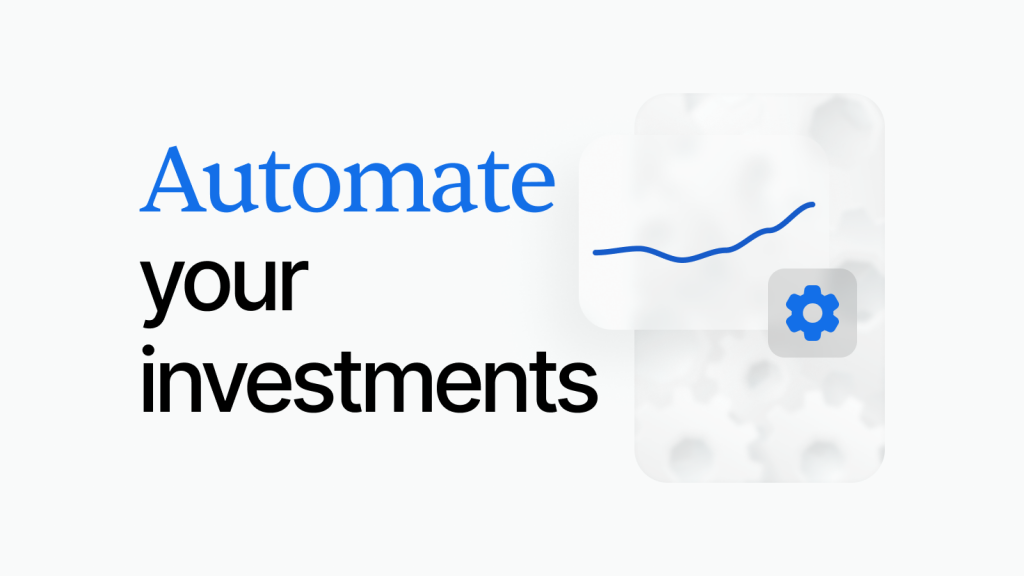Automated investing marries technology with finance, streamlining the way investments are managed. It’s become a transformative force in the investment world, making the process accessible to a wide range of investors.
In this guide, we dive into the essence of automated investing, clarifying how it functions and spotlighting its key advantages. Our goal is to arm you with the insights needed to effectively engage with automated investing, using it to bolster your investment approach and achieve your financial goals.
What is automated investing, and how does it work?
At its heart, automated investing is about employing technology to take on the task of managing your investment portfolio. It’s a method where algorithms and software are used to execute trades and manage assets based on predefined criteria such as your risk tolerance, investment goals, and time horizon. This technology-driven approach assesses market conditions, executes buy and sell orders, and rebalances your portfolio to maintain its alignment with your financial goals, all without the need for daily input.
This form of investing is often associated with robo-advisors—digital platforms that provide automated, algorithm-driven financial planning services with minimal human supervision. The beauty of automated investing lies in its ability to make informed, timely decisions, leveraging vast amounts of data to navigate the complexities of the market. It democratizes financial management, offering sophisticated investment strategies that were once only accessible to high-net-worth individuals or institutional investors.
Here’s a closer look at how it works:
1. Initial setup: Investors start by completing a detailed questionnaire that gauges their investment objectives, risk tolerance, and financial situation. This crucial step ensures that the automated system has all the necessary information to create a tailored investment strategy.
2. Strategy formulation: Using the information gathered, the automated investing platform, usually through a robo-advisor, constructs a personalized investment strategy. It selects a mix of asset classes and investments that align with the investor’s goals and risk profile.
3. Automatic execution: Once the strategy is set, the platform automatically executes trades to build the portfolio. It uses algorithms to buy and sell assets in a way that matches the predetermined investment strategy, taking into account the current market conditions.
4. Ongoing management and rebalancing: Automated investing doesn’t stop at portfolio creation. The system continuously monitors the portfolio, making adjustments and rebalancing as needed to maintain the target asset allocation.
5. Tax optimization: Some automated investing platforms include features like tax-loss harvesting, which are strategies designed to minimize taxes on investment gains or income.
6. Regulatory compliance and security: Automated investment platforms adhere to regulatory standards, ensuring that all investment decisions are made with the investor’s best interests in mind. They also employ robust security measures to protect investors’ financial and personal information.
By leveraging technology, automated investing simplifies the investment process, making it more accessible and less intimidating for investors. It brings a level of discipline and precision to portfolio management that can be difficult to achieve through manual investing, allowing investors to benefit from a hands-off approach while still working towards their financial goals.
Benefits of automated investing
Automated investing brings several key advantages to the table, catering to a broad audience from seasoned investors to those new to the financial markets. Here are the primary benefits:
- Efficient time management: One of the most compelling benefits is the time efficiency it offers. Investors can set their investment preferences and let the automated system manage the day-to-day tasks of portfolio management, including rebalancing and reinvesting dividends.
- Simplified investment process: Automated investing eliminates the complexity often associated with traditional investment strategies. By leveraging algorithms to make investment decisions, it offers a straightforward path to building and managing a diversified portfolio.
- Customized investment strategies: Despite the automated nature of the service, investors receive personalized investment strategies. These strategies are tailored to individual risk tolerances, investment goals, and timelines.
- Reduced emotional investing: The automated system operates on logic and algorithms, removing the emotional aspect of investing. This can help prevent common emotional investing mistakes, such as panic selling or excessively aggressive trading in volatile markets.
- Cost-effectiveness: Typically, automated investing platforms come with lower fees compared to traditional investment management services. The reduced overhead of not requiring a large staff of financial advisors makes it possible to pass on the savings to the investor in the form of lower management fees.
- Continuous monitoring and rebalancing: Automated platforms continuously monitor investors’ portfolios, making adjustments as necessary to ensure they remain aligned with the target asset allocation. This automated rebalancing helps maintain the desired risk level without manual intervention.
- Accessibility: With lower minimum investment requirements than many traditional investment options, automated investing platforms make it easier for a wider range of individuals to start investing and growing their wealth.
Choosing the best automated investing platform for your needs
When navigating through the myriad of automated investing options, identifying the best automated investing platform becomes crucial to aligning with your financial goals and preferences. The diversity among platforms means there’s something for everyone – from those who prefer a set-and-forget method to active traders seeking to capitalize on market trends with sophisticated algorithms.
Alternative invaType of automated investingestment
Description
Ideal for
Pure robo-advisors
Fully automated platforms that manage investments using algorithms, with no human intervention.
Investors seeking a completely hands-off approach.
Hybrid robo-advisors
Combines automated investing with the option to consult human financial advisors for personalized advice.
Those who want automation with access to personal advice for complex questions.
Socially responsible robo-advisors
Focuses on investments that meet environmental, social, and governance (ESG) criteria, allowing investors to align their portfolios with their ethical values.
Investors looking to make a positive impact through their investment choices.
Goal-based robo-advisors
Tailors investment strategies to help achieve specific financial goals, such as retirement or saving for education.
Investors with clear, specific financial goals.
Robo-advisors for active trading
Offers algorithmic trading strategies for those looking to engage in more active trading, including day trading and swing trading.
Active traders interested in leveraging automated strategies.
Micro-investing platforms
Allows investing with very small amounts of money, often by rounding up spare change, making it easy for beginners to start investing.
Beginners or those with limited capital looking to start investing.
Each type of platform offers distinct advantages, making the experience highly personal and dependent on individual investment styles, goals, and ethical considerations. By understanding the nuances of each platform, you can make an informed decision that matches your investment approach, ensuring your financial journey is both rewarding and aligned with your objectives.
Implementing automated investing into your financial strategy
Incorporating automated investing into your financial strategy is a streamlined process designed to significantly boost both the efficiency and effectiveness of your investment management.
Here’s a practical guide to getting started, which not only aligns you with the best automated investing platforms but also ensures your investments contribute towards achieving your financial milestones:
- Clarify your investment goals and risk appetite: Understanding your financial aspirations is essential. Equally, assessing your risk tolerance is crucial for choosing an automated investing platform that mirrors your financial situation and aspirations.
- Research and pick an appropriate platform: Whether your focus is on value investing, alternative investments, or low-risk investments, there’s a platform tailored to your needs. Keep an eye out for those offering services that resonate with your investment strategy Consider factors like fees, the range of services provided, available investment options, and user testimonials during your selection process.
- Stay informed and make adjustments when necessary: While automated investing platforms adeptly manage the daily tasks associated with your portfolio, regular monitoring on your part is advisable. This proactive approach ensures your investments remain aligned with your goals, allowing for adjustments in response to life changes or shifts in financial objectives.
For deeper insights into creating a robust investment strategy, enrich your knowledge with Mintos’ articles on long-term investments, discovering passive income ideas, identifying the best investment ideas, setting financial goals, mastering value investing, exploring alternative investments, and assessing low-risk investments to fortify your financial future.
Disclaimer:
This is a marketing communication and in no way should be viewed as investment research, advice, or recommendation to invest. The value of your investment can go up as well as down. Past performance of financial instruments does not guarantee future returns. Investing in financial instruments involves risk; before investing, consider your knowledge, experience, financial situation, and investment objectives.

